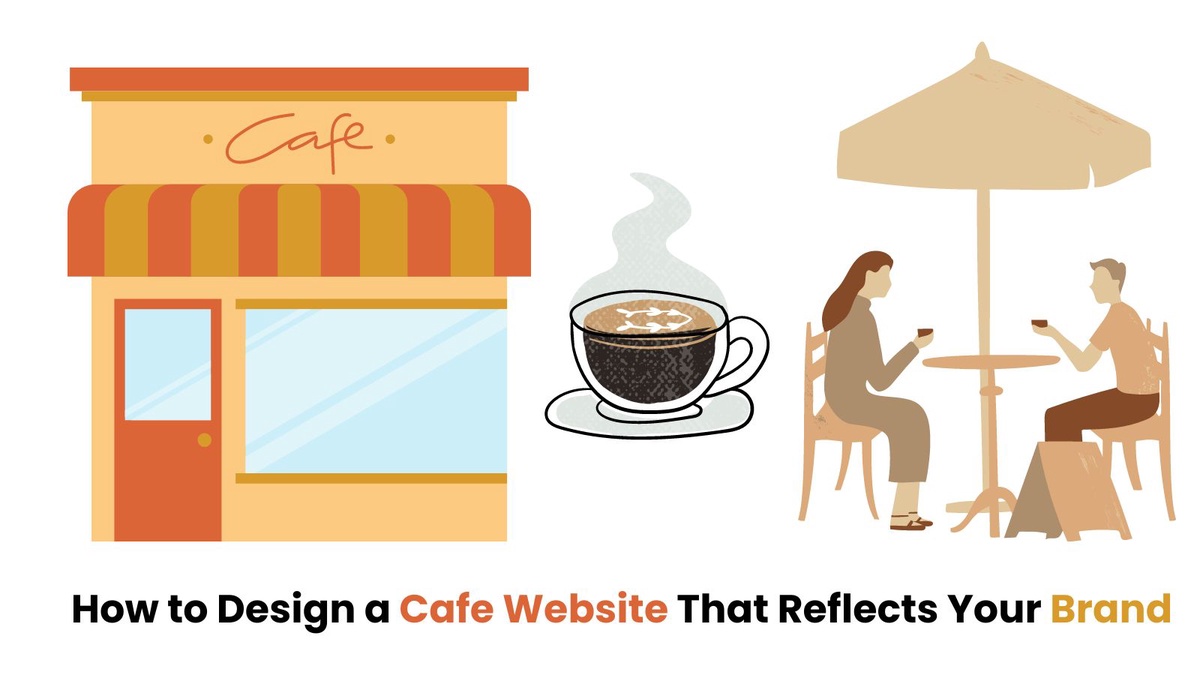Crafting a cafe website that truly embodies your brand is essential for attracting and retaining customers. In this blog post, we will delve into the key strategies to design a visually appealing and engaging cafe website that conveys your cafe's unique identity. From color schemes to layout choices, we will guide you in creating a digital space that reflects the essence of your brand.
Understanding Your Brand Identity
Before diving into the design process, it's essential to have a clear understanding of your cafe's brand identity. Your brand identity encompasses your cafe's values, personality, unique selling points, and target audience. Ask yourself: What sets your cafe apart from others? What atmosphere do you want to convey? Is your cafe cozy and rustic, or sleek and modern? Understanding these aspects will serve as the foundation for your website design, ensuring that every element aligns with your brand's ethos.
Creating a Captivating Homepage
The homepage is the digital front door to your cafe, and it's where you make the first impression on potential customers.
To create a captivating homepage, focus on the following elements:
1) Compelling Visuals:
Use high-quality images that showcase the ambiance of your cafe, including interior shots, mouth-watering food and beverage photos, and shots of happy customers. These visuals should evoke the emotions and experiences you want customers to associate with your brand.
2) Clear Branding:
Incorporate your cafe's logo, color scheme, and typography consistently throughout the homepage. Consistent branding helps reinforce your cafe's identity and makes your website more memorable to visitors.
3) Concise Messaging:
Craft a succinct headline and tagline that encapsulates the essence of your cafe. Use compelling language to communicate your unique selling points and what sets your cafe apart from the competition.
4) User-Friendly Navigation:
Ensure that navigation menus are intuitive and easy to navigate, allowing visitors to find essential information such as menu options, location, hours of operation, and contact details with minimal effort.
5) Call to Action (CTA):
Include prominent CTAs that encourage visitors to take action, whether it's making a reservation, ordering online, or signing up for your newsletter. Use persuasive language and visually appealing buttons to entice clicks.
Crafting Engaging Content
In addition to captivating visuals, engaging content plays a crucial role in keeping visitors on your website and enticing them to explore further. Here are some content strategies to consider:
(1) Menu Showcase:
Dedicate a section of your website to showcasing your menu items. Use enticing descriptions and high-quality photos to highlight your signature dishes, beverages, and desserts. Consider including information about ingredient sourcing, dietary options, and special promotions.
(2) Storytelling:
Share the story behind your cafe, including its origins, inspiration, and the people behind the scenes. Personal anecdotes and behind-the-scenes photos humanize your brand, creating a connection with your audience.
(3) Blog or News Section:
Maintain a blog or news section where you can share updates, announcements, recipes, and articles related to the cafe industry. This not only provides valuable information to your audience but also helps improve your website's Search Engine Optimization (SEO) by regularly updating your content.
(4) Customer Testimonials:
Showcase positive reviews and testimonials from satisfied customers to build trust and credibility. Include photos or names of the customers (with their consent) to add authenticity to the testimonials.
Optimizing for Mobile Responsiveness:
With the increasing use of smartphones and tablets, it's imperative to ensure that your cafe website is optimized for mobile devices. Mobile responsiveness not only improves the user experience but also positively impacts your search engine rankings. Here are some tips for optimizing your website for mobile:
(1) Responsive Design:
Use a responsive website design that automatically adjusts the layout and content based on the user's device. This ensures that your website looks great and functions smoothly across all screen sizes.
(2) Fast Loading Speed:
Optimize your website's loading speed by minimizing large images, using caching techniques, and leveraging content delivery networks (CDNs). Slow-loading websites frustrate users and can lead to higher bounce rates.
(3) Mobile-Friendly Navigation:
Simplify navigation for mobile users by using hamburger menus, collapsible sections, and touch-friendly buttons. Ensure that links and buttons are spaced out adequately to prevent accidental clicks.
(4) Thumb-Friendly Design:
Place important elements such as CTAs, menus, and contact information within easy reach of the user's thumb. This ensures that users can navigate your website comfortably with one hand on their mobile device.
Integrating Online Ordering and Reservations
Incorporating online ordering and reservation functionality into your cafe website can streamline the customer experience and boost sales. Here's how to integrate these features effectively:
1. Online Ordering:
Partner with a reputable online ordering platform or integrate an e-commerce solution directly into your website. Provide a user-friendly interface where customers can browse your menu, select items, customize orders, and securely complete transactions.
2. Reservation System:
Implement a reservation system that allows customers to book tables online. Provide options for specifying party size, date, time, and any special requests. Send automated confirmation emails to customers upon successful booking to reduce no-shows.
3. Promotions and Discounts:
Use your website to promote exclusive online offers, discounts, and loyalty programs to incentivize customers to order or reserve through your website.
Implementing SEO Best Practices
Search engine optimization (SEO) is essential for increasing your cafe website's visibility and attracting organic traffic from search engines. Here are some SEO best practices to implement:
1) Keyword Research:
Identify relevant keywords and phrases related to your cafe, menu items, location, and niche. Incorporate these keywords naturally into your cafe website's content, meta tags, headings, and image alt text.
2) Local SEO:
Optimize your website for local searches by including your cafe's name, address, and phone number (NAP) on every page. Create a Google My Business listing and encourage satisfied customers to leave positive reviews.
3) High-Quality Content:
Publish high-quality, informative content that addresses the needs and interests of your target audience. Regularly update your blog or news section with relevant topics related to the cafe industry.
4) Mobile Optimization:
As mentioned earlier, ensure that your website is mobile-friendly, as Google prioritizes mobile-responsive websites in its search results.
Monitoring and Analyzing Performance
Once your cafe website is live, it's essential to monitor its performance and make data-driven optimizations to improve the user experience and drive conversions. Here are some key metrics to track:
1. Website Traffic:
Monitor overall website traffic, as well as traffic sources (organic search, direct, referral, social media, etc.), to understand how visitors are finding your website.
2. User Engagement:
Track metrics such as bounce rate, average session duration, and pages per session to gauge how engaged visitors are with your website content.
3. Conversion Rate:
Measure conversion rates for key actions such as online orders, reservations, newsletter sign-ups, and contact form submissions. Identify areas for improvement and A/B test different elements to optimize conversions.
4. SEO Performance:
Use tools like Google Analytics and Google Search Console to monitor keyword rankings and track the performance of your website in search engine results pages (SERPs). Monitor changes in search visibility, click-through rates (CTRs), and impressions to assess the effectiveness of your SEO efforts.
5. User Feedback:
Encourage customers to provide feedback on their website experience through surveys, contact forms, or social media channels. Use this feedback to identify pain points, address usability issues, and make necessary improvements to enhance user satisfaction.
6. Technical Performance:
Regularly audit your website for technical issues such as broken links, page errors, and slow loading times. Addressing these issues promptly ensures a smooth browsing experience for visitors and prevents potential drop-offs.
By continuously monitoring and analyzing these metrics, you can gain valuable insights into how users interact with your cafe website and make informed decisions to optimize its performance.
Conclusion
To design a cafe website reflecting your brand, start by understanding your brand identity. Focus on captivating visuals, clear branding, and concise messaging. Engage visitors with compelling content and optimize for mobile responsiveness. Integrating online ordering/reservations and implementing SEO best practices will further enhance your website's effectiveness.


No comments yet